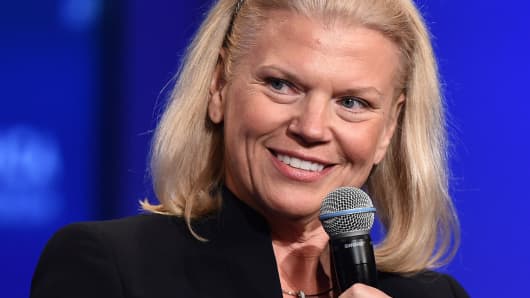Few workforce topics have received as much attention during the past decade as the role of gender diversity, especially at the leadership level. Finally, we have seen the arrival of female CEOs in some of the top Fortune 500 companies. Corporations such as GM, HP, IBM, and PepsiCo now have female CEOs. What's more, females hold the top positions at Lockheed and General Dynamics, two traditionally male-dominated defense corporations.
But for all the progress, we need to look at the big picture. Within five years, more women than men will be in the global workforce (we are already very close). And if females will be in the majority in the workforce, we could argue they should also be in the majority in leadership ranks. The reality? Female CEOs in the Fortune 500 represent a measly 4.8 percent. Outside the Fortune 500, the numbers are equally unimpressive. In 2010, female CEO positions across all types of corporations, small and large, stood at 14.4 percent; four years later, that number rose to a whopping 14.6 percent. In addition, the wage gap has not closed dramatically in 15 years. Women are paid less than males for just about every job.
Read MoreBet on women with Barclays' new index
So what's holding women back, other than bias? One thing is certain: It is not competence. In DDI's and The Conference Board's biannual Global Leadership Forecast 2014-2015, which sampled more than 13,000 leaders around the world, we found that female leaders rated themselves as effective as males on an entire array of competencies. Multiple other studies show that female leaders are every bit as competent as their male counterparts. In fact, DDI's own testing and assessment processes, which look at real behavior, not survey data, show little difference in gender leadership competence.
However, our forecast pinpointed one difference: Women are far less likely than men to have confidence in themselves as leaders. Ironically, a day after we came to this conclusion, Atlantic Monthly (May 2014) published a review of "The Confidence Code," a new book by Claire Shipman and Kitty Kay — both prominent broadcasters. A quick quote from that book sums up the issue: "He thinks he can. She thinks she can't. Compared to men, women don't consider themselves as ready for promotion, they predict they will do worse on tests, and they generally underestimate their abilities." What is even more startling is that they point to several studies where confidence is just as important as competence to career success. Of course there is another way to frame their findings. Perhaps females have a bit more humility than males, and perhaps males are arrogant—a trait that has gotten countless male CEOs in trouble.
Read MoreOp-ed: Are you a spouse? No, I'm a CEO
It is not an easy difference to fix. Shipman and Kay attribute some lack of confidence to early childhood, when girls are often discouraged from doing things they can't do as well. Hence, they are hesitant to take risks. Boys, on the other hand, are taught to just "do it," almost regardless of consequences. Companies are making efforts to close the gender gap. They have special programs, are putting more females into high-potential pools, and are assigning mentors. But they are not moving fast enough.
One thing is certain: It is a gap worth closing. Our forecast divided participating organizations into two categories: The financial winners and the financial losers. In the winning companies, 37 percent of leaders were female. In the losing companies, only 19 percent were female. The same is true for the percentage of women in high-potential programs. Twelve percent of all high-potential leaders were female in the winning organizations; only 8 percent were female in the losing organizations.
Read MoreWant to boost shareholder returns? Hire a woman
Still, it is far too few. Consider this: Of the dozens of leadership practices the Forecast found that correlated with company performance, none made a bigger difference then gender diversity in the leadership ranks. Not even close.
Rich Wellins, Ph.D., is a senior vice president at global talent management consultancy Development Dimensions International (DDI). Follow DDI on Twitter @DDIworld.


